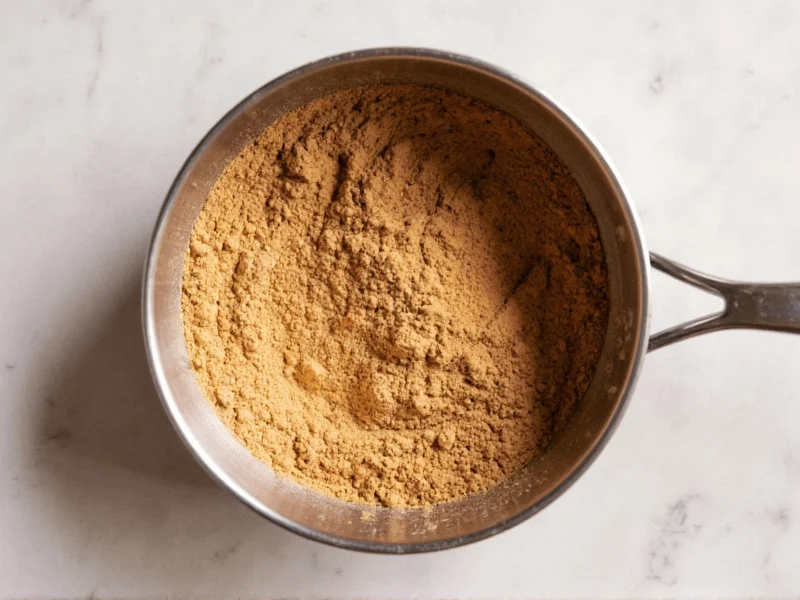Understanding File Powder and Its Role in Gumbo
File powder, pronounced "fee-lay," is a traditional thickening agent and flavoring essential to Creole and Cajun cuisine, particularly in gumbo preparation. Made exclusively from the dried and ground leaves of the North American sassafras tree (Sassafras albidum), file powder provides gumbo with its distinctive earthy flavor and silky texture. Unlike roux or okra, file powder is added at the very end of cooking to preserve its unique properties.
Historically used by the Choctaw Nation before being adopted by Louisiana settlers, file powder serves dual purposes: it thickens the broth while contributing a subtle root beer-like aroma. Understanding how to make proper file powder ensures your gumbo maintains authentic character while avoiding common preparation mistakes that compromise flavor and texture.
Essential Materials for Making File Powder
Creating authentic file powder requires minimal equipment but demands attention to detail. You'll need:
- Fresh sassafras leaves (preferably young spring growth)
- Clean drying surface (screen, parchment paper, or dehydrator trays)
- Spice grinder, coffee grinder dedicated to spices, or mortar and pestle
- Airtight glass container for storage
- Paper towels or clean cloth
When harvesting sassafras leaves, select young, vibrant green leaves from healthy trees. Avoid leaves with spots, discoloration, or evidence of insect damage. Never use sassafras roots for culinary purposes due to safrole content concerns. The FDA restricts safrole-containing products because of potential health risks when consumed in large quantities.
| Drying Method | Time Required | Temperature | Best For |
|---|---|---|---|
| Air Drying | 7-14 days | Room temperature | Traditional preparation, preserves maximum flavor |
| Oven Drying | 2-4 hours | 170°F (77°C) | Controlled environment, faster results |
| Dehydrator | 4-6 hours | 95-115°F (35-46°C) | Consistent results, ideal for larger batches |
Step-by-Step File Powder Preparation
Harvesting Sassafras Leaves: Collect leaves early in the morning after dew has evaporated. Focus on young, tender leaves from new growth for optimal flavor. Wear gloves to protect your hands and use clean scissors to avoid contamination. Limit your harvest to 20-30% of a tree's leaves to ensure its health.
Cleaning Process: Gently rinse leaves in cool water to remove dirt and debris. Pat completely dry with paper towels—any moisture remaining will encourage mold during drying. Never wash leaves aggressively as this damages delicate flavor compounds.
Drying Techniques: Proper drying determines your file powder's quality. For air drying, arrange leaves in a single layer on screens in a dark, well-ventilated area away from direct sunlight. Turn leaves daily to ensure even drying. Oven drying requires placing leaves on parchment-lined baking sheets at the lowest possible temperature with the door slightly ajar. Dehydrators should operate between 95-115°F (35-46°C) for 4-6 hours.
Testing Dryness: Leaves are sufficiently dry when they crumble easily between your fingers with no moisture visible. Properly dried leaves should feel papery and brittle. Any flexibility indicates remaining moisture that could cause spoilage.
Grinding Process: Break dried leaves into smaller pieces before grinding. Use short bursts in a spice grinder to prevent overheating, which degrades flavor. For traditional preparation, mortar and pestle grinding preserves more volatile compounds. Grind to a fine, uniform powder—coarse particles won't dissolve properly in gumbo.
Proper Storage and Shelf Life
Store homemade file powder in an airtight glass container away from light, heat, and moisture. Properly stored file powder maintains optimal flavor for 6-12 months. Exposure to humidity causes clumping and flavor degradation. Check periodically for any signs of moisture or mold, which require discarding the entire batch.
Never store file powder in plastic containers, as the essential oils can degrade plastic and create off-flavors. Dark glass jars with tight-sealing lids provide the best protection. For extended storage, consider dividing your batch into smaller containers to minimize air exposure each time you access the powder.
Using File Powder in Gumbo: Best Practices
Understanding when and how to add file powder to gumbo separates authentic preparation from common mistakes. Always add file powder after removing gumbo from heat. Adding file to boiling liquid causes stringiness rather than proper thickening. Start with 1/4 teaspoon per serving, stirring gently to incorporate. Allow 3-5 minutes for the powder to fully hydrate before serving.
File powder works differently than other thickeners. It provides a distinctive mouthfeel that roux cannot replicate. Many traditionalists use file powder as the only thickener in seafood gumbo, while combining it with a light roux for chicken and sausage variations. Never use file powder as a substitute for roux throughout cooking—its magic happens at the finish.
Troubleshooting Common File Powder Issues
Stringy Texture: This occurs when file powder is added to boiling liquid. Solution: Always remove gumbo from heat before adding file, and allow proper hydration time.
Weak Flavor: Often results from improper drying or old powder. Solution: Use fresh, properly dried leaves and store powder correctly. Test small batches before committing to a full recipe.
Clumping: Caused by moisture exposure or improper grinding. Solution: Ensure complete dryness before grinding and use a fine mesh sieve to remove any coarse particles.
Over-thickening: File powder continues thickening as it hydrates. Solution: Start with less than you think you need—you can always add more, but you can't remove excess.
Authenticity Considerations for Homemade File Powder
True file powder comes exclusively from sassafras leaves—not roots or other plants. Some commercial products blend file with other thickeners, but traditional preparation uses pure sassafras. When making your own, resist the temptation to add other ingredients; authentic file powder contains nothing but dried sassafras leaves.
The distinctive aroma of quality file powder resembles root beer with earthy undertones. If your powder lacks this characteristic scent, the leaves may have been too mature when harvested or improperly dried. Spring-harvested young leaves provide the most vibrant flavor profile essential for authentic Louisiana gumbo.











 浙公网安备
33010002000092号
浙公网安备
33010002000092号 浙B2-20120091-4
浙B2-20120091-4